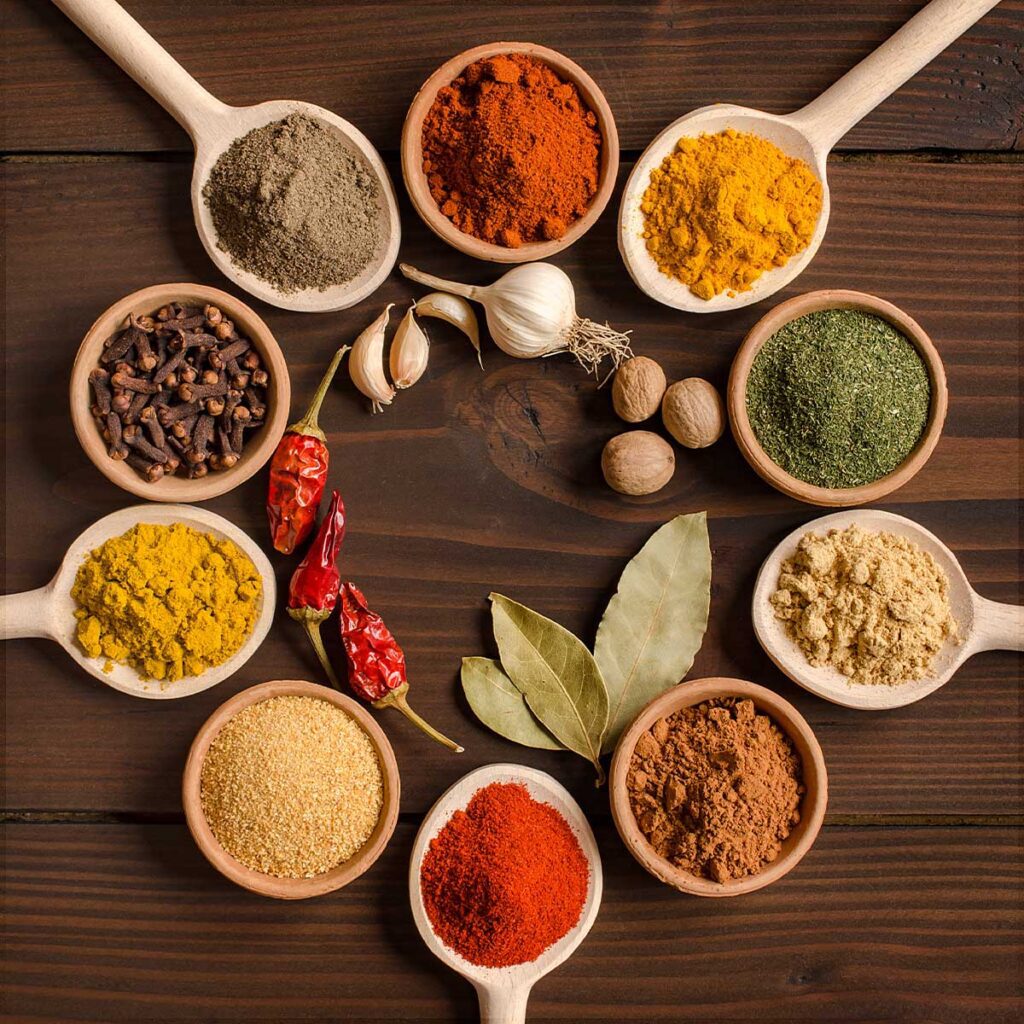A Boost for the Body and the Palate
The term antioxidant has become more than just a buzzword in our community. We are encouraged to consume antioxidants because of their power to prevent cancer, Alzheimer’s, heart disease and premature aging. We know they can be found in many fruits and vegetables, but there is one potent source of this beneficial nutrient that is not as well known … spices.
Surprising to many, spices not only pack a potent flavor punch, they contain high levels of antioxidant power – more per ounce than fruits and vegetables. They provide our bodies with welcome protection against many of today’s most common ailments. Wellness doesn’t have to be associated with sacrifice and bland meals. You can add antioxidants to any dish by throwing in your favorite spices. Fortunately for the average consumer and kitchen novice, many of the most beneficial spices are also the most common. They are easy to cook with, the flavors are pleasant and recognizable and they are accessible and reasonably priced at any grocery store. What follows are some of the most beneficial spices available.
Garlic
This spice, a member of the onion family, is cultivated for the plant’s bulb, which is divided into sections called cloves. These flavorful nuggets have health benefits galore.


Studies have shown that two cloves of garlic per week can help protect the body against cancer. Garlic helps increase the supply of hydrogen sulfide in the body, which acts as an antioxidant. Available whole in the produce section as well as jarred and minced, garlic can be added to your veggies, your favorite pasta sauce, salad, garlic bread, chicken, beef or pork to “kick the flavor up a notch.” The options for garlic are endless. It’s a flavor you can enjoy with just about any cuisine.
Turmeric
While not as well known as garlic, this spice provides a virtual medicine cabinet of health benefits. It has been known to fight inflammation, prevent Alzheimer’s, arthritis, and carpal tunnel syndrome. A member of the ginger family, the stem of the plant is boiled, dried and ground into an orange-yellow powder. Indian cuisine enthusiasts will recognize the flavor as a key component of curry dishes. While less adventurous chefs may be intimidated by this ingredient, a simple internet search for “turmeric recipes” will reveal thousands of options for simple, delicious, homemade meals that contain this beneficial spice.
Ginger
This delectable root has been used for many years as a home remedy for an upset stomach. Today, many parents still serve their kids a glass of cold ginger ale when they are sick. The benefits of ginger, however, extend far beyond soothing an upset stomach. Ginger helps with inflammation, can reduce nausea associated with chemotherapy and can be used as a topical treatment for rheumatoid arthritis. This great addition to marinades or salads can be found in root form in the produce section or ground on the spice aisle. Like turmeric, ginger might be a little intimidating to some cooks but can be found in all manner of recipes from appetizers and main courses to desserts. Ginger also serves as a natural palate cleanser between flavorful dishes.
Cinnamon
In desserts and many breakfast pastries, cinnamon is a delicious way to protect your body against diabetes and heart disease. This well known spice, which comes from tree bark, can lower blood glucose, cholesterol and triglycerides. It also helps with congestion and improves circulation. Enjoying cinnamon is simple. Sprinkle a little in your coffee or hot chocolate for some added flavor, or top your sweet potatoes or dinner rolls with a little cinnamon and sugar.
Cayenne Pepper
For the palates that enjoy a little heat, nothing beats cayenne pepper. This well-known pepper is packed with flavor and beta carotene, as well as other antioxidants that help build healthy mucous membrane tissues. These important tissues are our bodies’ way of warding off bacteria and viruses. Cayenne pepper also contains capsaicin, a cancer preventive. The intense flavor, available in fresh, powdered and flake varieties, is beneficial in small doses. Cayenne pepper can be sprinkled over food and is a common ingredient in most hot sauces. Spices are very low in calories, packed with nutrients and add an intense amount of flavor. A little extra flavor in your favorite dish might be just the antioxidant boost your body needs to stay well.

